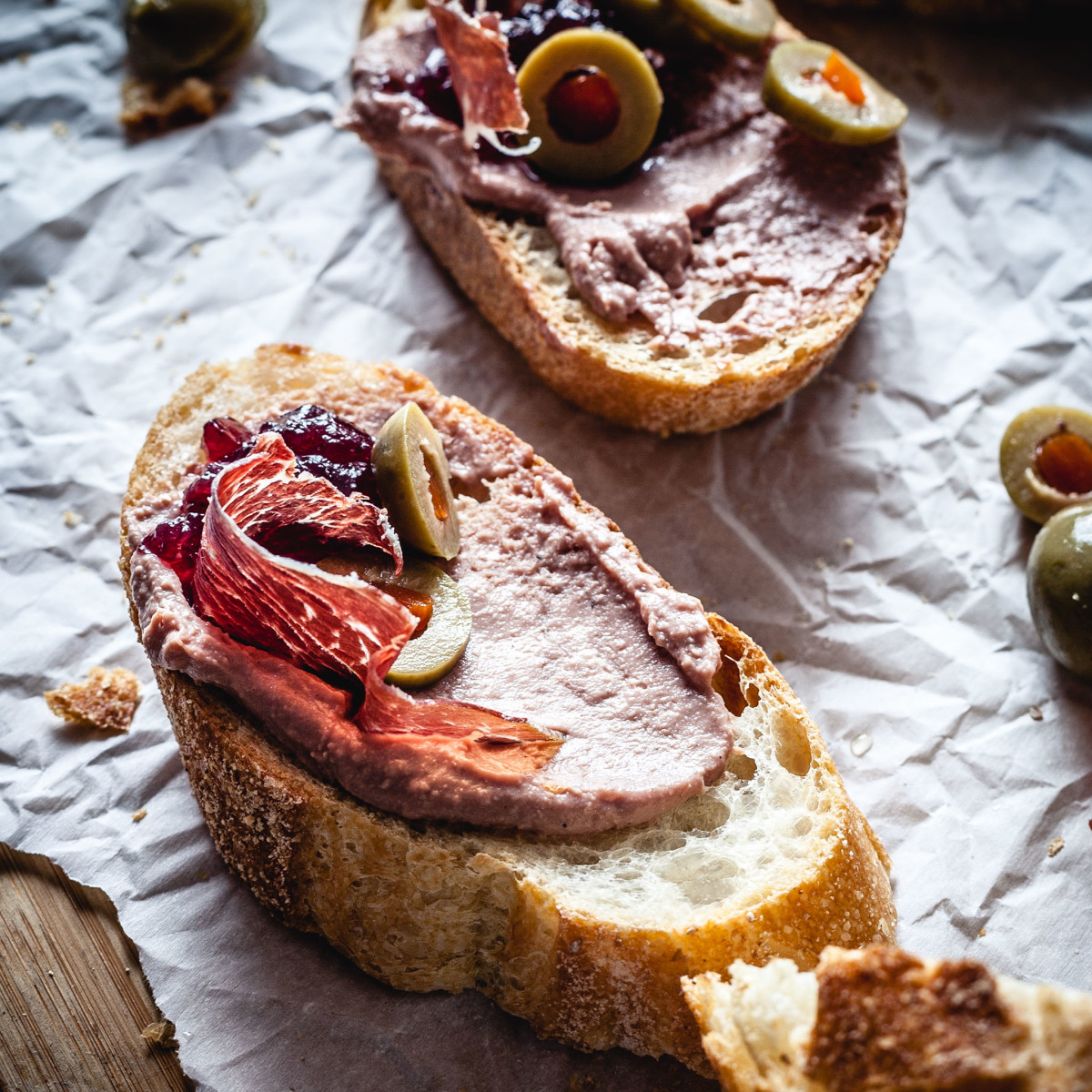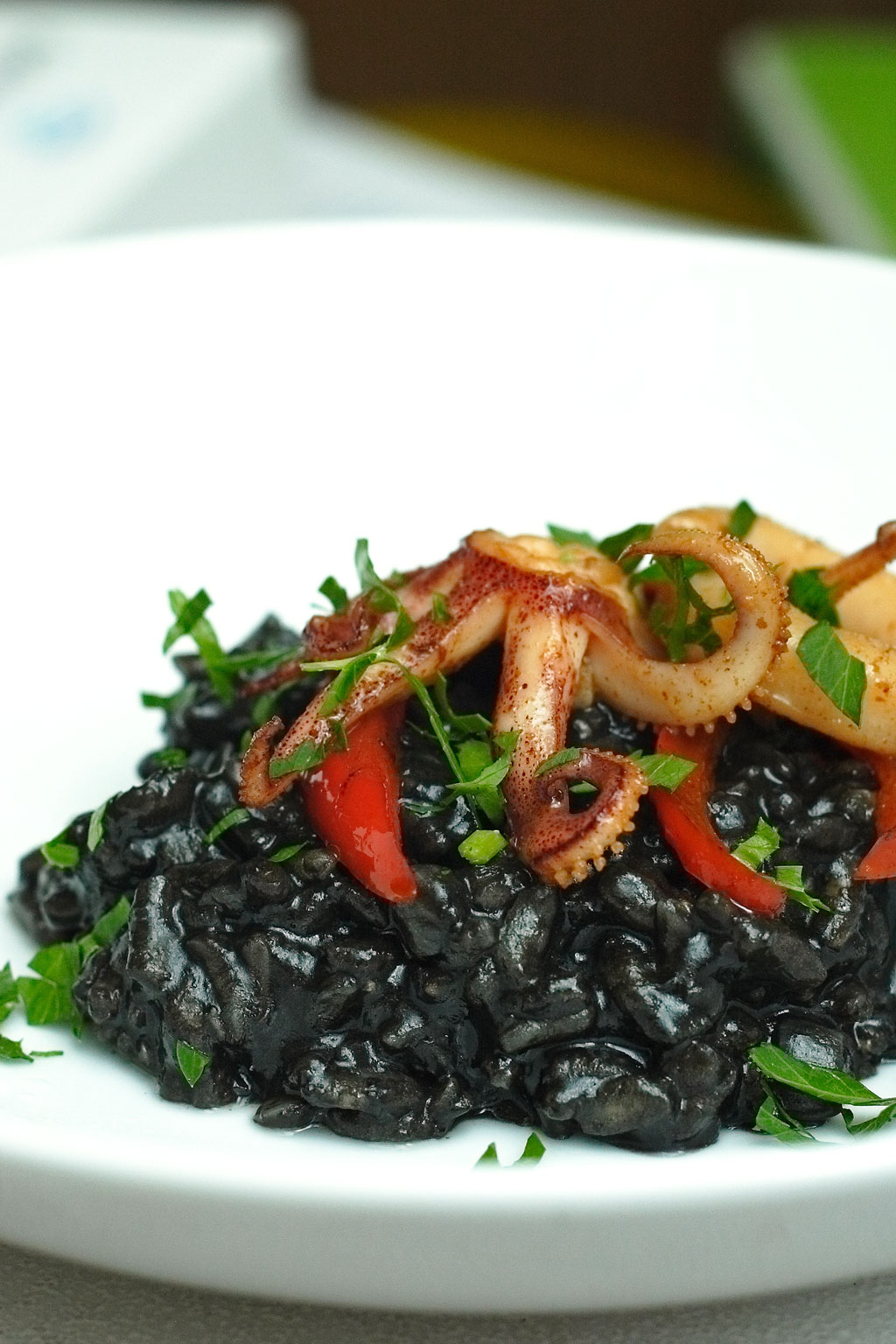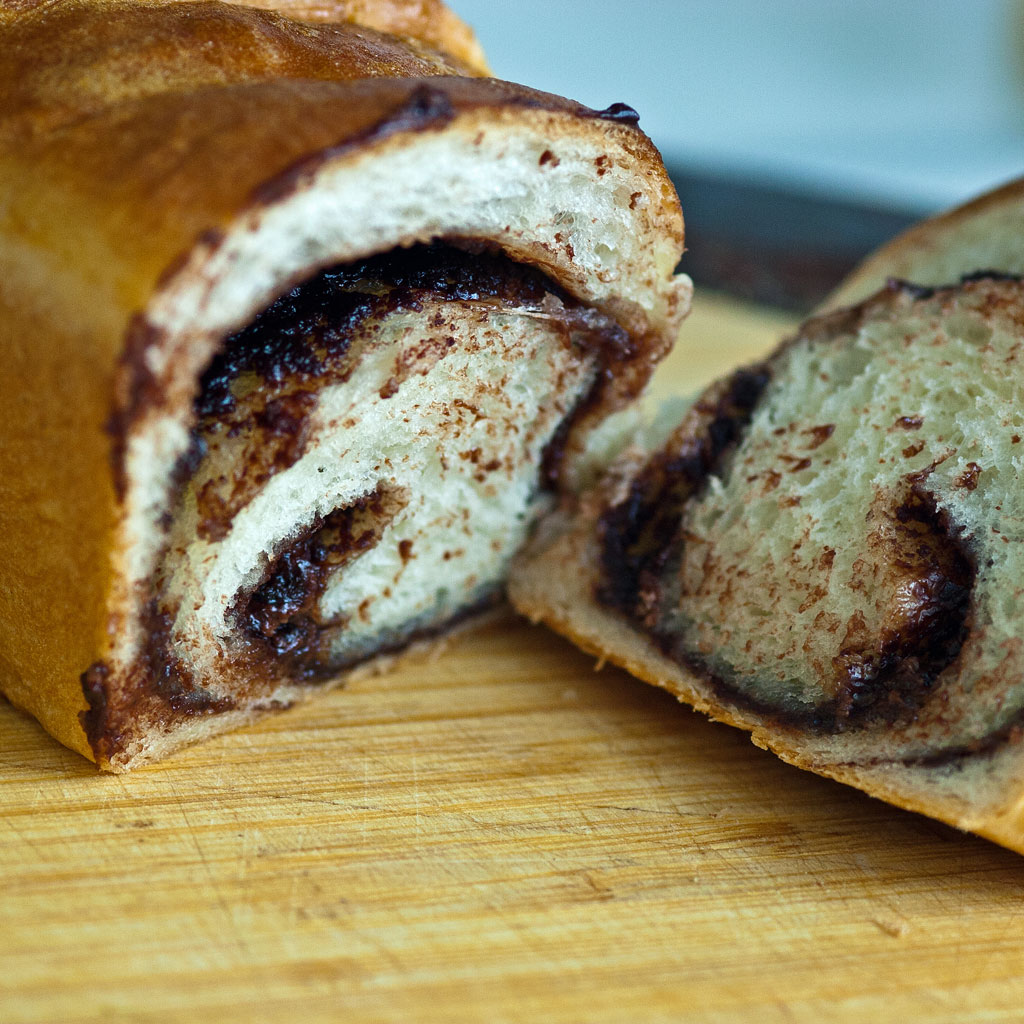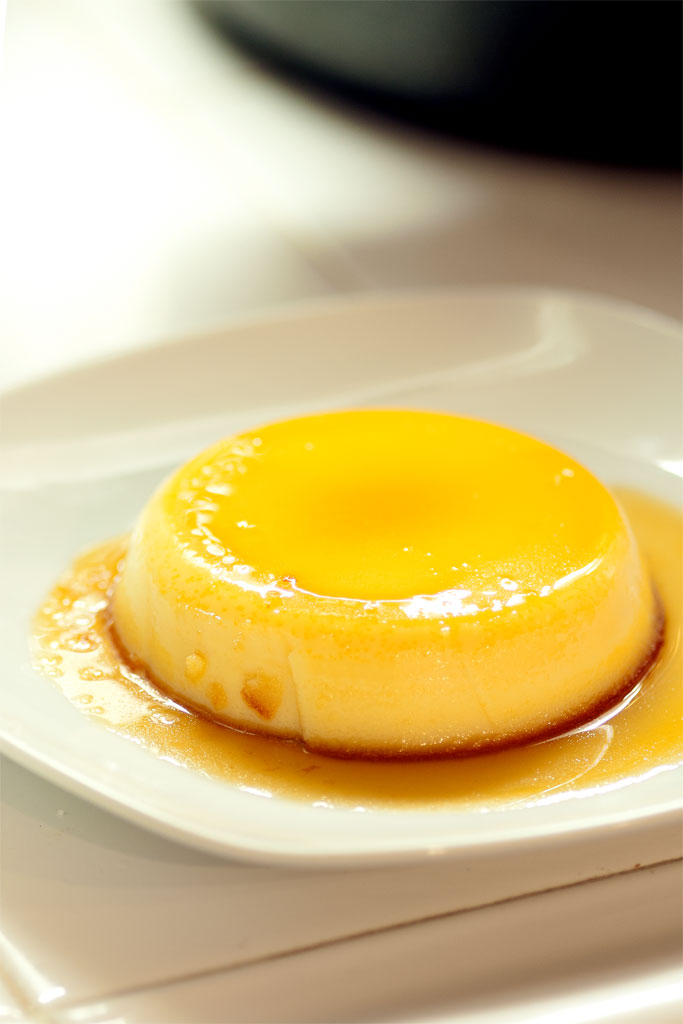I start every post with a photo. Another fact about this blog. No ads. Ok, another one. It’s not a site about recipes, It’s some sort of cooking journal. I write about adventures in cooking and I share them. That’s how this blog started and that how it stays. One more, ok. As much as I bash on traditional cooking (I really don’t but I have had questioned it in many posts), I love traditional cooking and wish I could cook as deliciously as our beloved basque grandma. Ok, last one… even though there’s not a single post about spam on this blog, I love it. There it is, I said it. Deal with it. Unsubscribe. Do what you gotta do. Otherwise I’d suggest reading this following post on Sous Vide Chicken Liver Pate.
Talking about my grandma. Her kitchen included this old beat-up gas stove that was terrifying to look at. As a kid… I would make fun of it and brag about my mom’s electric one… a futuristic device in comparison, right? Goes to show you how clueless this little kid was. I would take gas over electric any day now. Except for induction, but then again..maybe even over induction… fire is just WAY more fun.
Here’s the horror stove I was telling you about. What are those knobs for? I’m sure the red one opened the gates of hell.

Now that I got all of that out of my system, back to cooking.
Chicken Livers. That’s the stuff of love… and hate. I love them otherwise I wouldn’t be writing about it. Pates, in general, are for lack of a better descriptor a godsend. It’s fat at its best. Phat fat basically.
I usually don’t but I followed a recipe this time. I thought it would be a breeze. It almost kicked my ass. I love and follow chefsteps.com‘s every move. They offer so much great content in clever cooking that it is hard to resist reading their site. Their recipes and techniques are pretty awesome. This pate recipe is no exception. It’s a tough one but it’s so worth it for all you chicken liver lovers out there. Check their recipe here or continue reading for my rendition of it. With a few differences in ingredients… namely the booze… pretty much follows theirs pretty accurately. Thanks, Chefsteps guys!
Ingredients (servings: 1 bucket of pate. Time: ~4 hours)
100g Bacon, ground.
200g Onion, small dice.
50g Shallots, small dice
100g White port, dry. I used red port sweet (don’t ask)
100g Madeira
50g Apple Brandy (didn’t have any, used more of the other wines)
500g Chicken liver
200g 4 Eggs
15g Salt
2.5g Insta cure #1
0.5g Black pepper ground. (I used about 5g, I like pepper)
0.8g Sweet Spice. (I didn’t have any. Used dry thyme powder)
200g Clarified butter. (Clarified it myself)
Step 0. Measure the hell out of everything. Precision can be fun. Have everything ready. Including the water bath at the right temperature.
Step 1. Cook the bacon over medium heat until it develops some color and the fat renders. Add the onion and the shallots to the pan and cook until translucent. Add the booze. Cook over medium heat for a few minutes. Remove from the stove and let it infuse for about 10 mins. Strain. Yield is about 200g. Personally, I don’t agree with this step myself. I would much rather pressure cook the onions and the bacon for about 20 mins and get all the flavor extracted. Reduce the booze on its own and make sure no alcohol is left. Combine booze and stock. Reduce until 200g. I feel like most of that awesome bacon flavor was left behind. But anyways. The result was still phenomenal so I should stop my whining for now. Reserve this concoction. Allow cooling.
Step 2. In a blender combine the rest of the ingredients (don’t add the butter yet, that’s what step 3 is for) plus the concoction from above. Blend until super smooth. Strain to make sure is even smoother. My blender isn’t big enough. I had to work in batches. Not as easy as it may sound.
Step 3. With the blender going, slowly add the liquid clarified butter, slowly to ensure a proper emulsified mix. You’re almost there.
Moment of hesitation during this laborious process. I wanted to drink the content of my blender so badly. Not because I’m some irrational carnivore. This liquid! It looked like the most delicious chocolate shake I’ve ever seen. Truly magical but it was raw blended chicken livers. I stopped myself and ignored the temptation.
Step 4. Here is where things got a little dicey. I couldn’t find mason jars. I couldn’t even find jars I could reuse. And I swear I never throw them out. My apartment is littered with old jars from stuff I buy at the store. They’re in my fridge containing food experiments. I used a ziplock bag. It’s fine. It’s gonna go in the sous vide bath anyways. Might as well. Remove the air the best you can. Cook for about 2 hours at 68C. Enough for the eggs to set and the mixture to pasteurize.
Step 5. Transfer to a plastic container or something more elegant. Refrigerate overnight. You can eat it right away but the mix needs to cool to properly set otherwise… runny delicious pate. Still awesome. I have a kilo of pate. It’s not even my birthday.
Told you I love spam:
do you love spam? chicken liver pate? any pate? Please share your thoughts with us!
Wanna get more sous-vide cooking guides and cool cooking how-to’s in your mailbox? You know what needs to be done!
We never spam. You should only be getting updates when new content is posted on the site. We also respect your privacy. We don’t share your email address with anyone and you can unsubscribe anytime!













24 comments
Interesting recipe and technique. I don’t understand though you would need more kosher salt when measuring in grams.
Because of their different density you mean?
Yes, I would have understood a different measurement in volume, but not in grams. Both table salt and kosher salt are pure sodium chloride, so if you measure by grams (and especially if it is dissolved like in this recipe) there cannot be a difference. Perhaps you like the paté more salty than the original recipe?
Gotcha! let me fix that. I did find the pate with the proposed amount of salt to be bland (pretty significantly). Would the anti-caking agent in table salt be enough to make a difference in how it compares to kosher salt which has none?
I certainly hope the anti-caking agent in table salt (which is a US thing by the way, our table salt doesn’t have any) isn’t noticeable. The FDA limit the amount of anti-caking agent to 2% by weight. If you can taste that difference, you should switch careers at once and become master taster for a food company 🙂
Stefan, the kosher salt I use measures differently (as the granules are larger) than it’s finer counterparts. But, (oddly) I find fine salt to be more aggressive in flavoring. I think the key is to taste, taste, taste and add slowly. Of course, all salts have different intensities and purposes. 🙂
Shanna, if you measure by volume than indeed there is a difference between kosher salt and regular salt. If you measure by weight, there is no such difference. I think you will only notice the difference between different salts when you use them as finishing salt. If the salt is dissolved, I’d be very surprised if you could taste the difference (since chemically speaking, when any type of salt is dissolved you will have water with sodium ions and chloride ions).
Paul, Hard to believe you are not a professional in food writing/photo/recipe development. You mentioned grandma – and guess what I thought of – chicken livers (and onions)! Great post, have to applaud the apple brandy addition to the recipe. Keep those childhood stories, great photos and no apologies (for kicking food blogging arse) coming.
Hey Shanna! Super humbled by your comment! Seriously, so thank you. I really love this food thing. It’s my “hobby” but I have a day job that requires most of my time. I can keep up the childhood stories for sure… there’s plenty of them embedded in my head hhahaha!
1. that’s so cool you have a photos of that stove. 2. your video is crazy! made me tired watching you. 3. why is there a mirror in your kitchen? 4. i would never have used the sous vide for pate, but i find it fascinating. it might be my age, but i like making things, like pate or risotto, the old fashioned way, even though i don’t always stick to the traditional recipes. 5. great post and photos.
1. I took that photo so many years ago (my grandma had already passed) with the first digital camera I owned. A little canon ELF point and shoot. I was snapping pics of everything in sight. I guess I still am 🙂 2. Yeah, that video compresses about 2 hours into a minute and a half, pretty stressing and tiring hahaha. 3. My apartment is tiny here in Vancouver. That’s basically the sliding door to the washer and dryer space. It’s an open kitchen, the living room is right there too! 4. I’ve made pate the traditional way, and I love it as well. Sous vide simply ensures the livers don’t overcook … you know how sous vide cooks are horrified by overcooked anything. The eggs also set very precisely without overcooking. And then you get pasteurization for free as well. I cook risottos the traditional way but wanna try the pressure cooker. I here it works really well. 5 THANK YOU SO MUCH MIMI!!! Love your comments!
I guess Vancouver is like any other big city. In my daughter’s apartment in NYC, the kitchen is part of the living room, and there’s no countertop! I keep hearing about pressure cooking risotto as well. It is tempting to try…
Yeah, that’s basically my situation here. Kitchen, living room, only bathroom… all share the same common area. Practical, but a bit suffocating 🙂 I do have a bit of a counter top! anyways, we should try this pressure cooked risotto, Mimi.
relinking all thoughts
Hey Paul, thank you for sharing. I made the recipe, but didn’t have insta cure. Mine pate was really smooth as texture, but sort of bitter on taste. So I know that chicken liver is a bit bitter, but wondering how was yours?
Do you use some special technique to clean the liver? I thought that if I put in a milk for a few hours will clean out most of the blood in liver.
Anyway, thank you for sharing!
Hey Tihomir! hmm.. wonder what’s going on there. It should not come out bitter, perhaps strong in flavor but not bitter. Insta cure should have an impact on flavor though. Keep in mind that’s what’s used for pastrami, hams, bacon and stuff like that and it does affect the flavor in a good way. I have made pate without it and it doesn’t turn out bitter. Milk helps take the edge off but quite frankly I haven’t done it myself. Only thing I can think off is your blender. If you blend certain things for too long, some bitterness can develop, like when blending olive oil for too long. Next time just cook a single liver on a pan with butter and some salt and see if it tastes bitter to you. Shouldn’t. https://thatothercookingblog.com/2013/03/15/give-chicken-liver-pate-a-chance-pistachios-and-duck-fat-edition/
Thank you Paul! I made it!! YEAPPIE!!
I changed few things. Also I soaked the liver few hours in milk, but also followed your advice to use blender for a short time, and it turned out great! No bitter taste and it amazing!
awesome!!! now, I feel like testing the blender factor. So many variables but worth the effort. I think blending hasn’t been explored that much in home cooking . I should ask the chefsteps guys if they know anything about this. I’m really glad you figured it out!
Depending on your blender, it can actually cook the puree if you blend it for too long. VitaMix blenders can cook soups on high.
yep
Has anyone considered adding the onion and bacon into the blended pate. It does seem strange leaving it out
yeah, I’m a bit torn about this myself. I wonder if in the orginal recipe there were some concerns about grittiness in the texture of the final pate. Either way it should work and frankly, I think that adding the bacon directly to the blender is the way to go unless you try to extract all of its flavor by pressure cooking it to render bacon stock. Thanks for your comment Catherine!
I’ve done it both ways and not much difference. The liver is a bit more muted. I’ve got a vitamix so the “grit” wasn’t really an issue. I did put that in and blended for a bit before adding the livers. Lovely blog btw. Just found it
thank you!